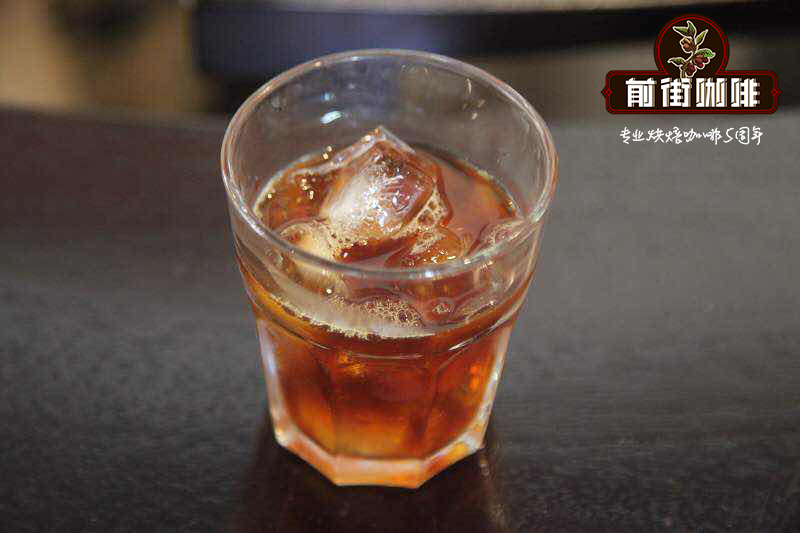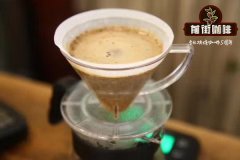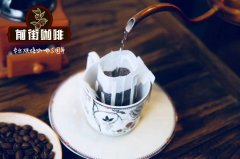South American Coffee | introduction to coffee producing areas and coffee grading systems in Trinidad and Tobago

Coffee is grown on estates and small farmers in the hilly areas of Trinidad and Tobago. The number of the industry has declined in recent years due to coffee diseases and pests, inefficient farming practices and uncertain economic conditions.
The Republic of Trinidad and Tobago is located in the southern Caribbean south of Grenada, adjacent to the north-east coast of Venezuela. Coffee production in Trinidad and Tobago fell from 2361 tons in 1985 to less than 1000 tons in 1999.
Small farms in Trinidad and Tobago grow a variety of crops, including beans, rice, potatoes, peas and other vegetables, as well as fruits used mainly for the domestic market. Large estates mainly grow export crops, which are usually managed by experts and employ a large number of workers.
Sugar is the main commercial crop in Trinidad and Tobago and is grown on a number of large estates and thousands of small farms, accounting for 2/3 of the total production of large estates. Like Trinidad and Tobago coffee, sugar production has declined. For example, about 95000 tons were produced in 1999 and 250000 tons in 1961.
Trinidad and Tobago Cocoa and Coffee Industry Committee
The Trinidad and Tobago Cocoa and Coffee Industry Committee was established in 1961 with the task of ensuring the best arrangements for the processing, grading, purchase, sale, export and marketing of Trinidad and Tobago coffee and cocoa beans. The goal of helping the cocoa and coffee industry benefit individual entrepreneurs and the national economy.
The Board oversees the purchase of coffee beans and cocoa from Trinidad and Tobago from small and medium-sized farms and assists in the grading, packaging and certification process, involving the local market as well as the international market involving exporters and authorized purchasing agents.
The Cocoa and Coffee Industry Committee of Trinidad and Tobago is also responsible for managing price plans for products covered and supervising the industry as a whole.
Coffee grading system in Trinidad and Tobago
A series of standards have been developed to describe the procedures to be followed when purchasing coffee beans, including: grade 1, specified moisture content not exceeding 12%, commercial defects not more than 2% (of which no more than 1%) can be black beans. Trinidad and Tobago coffee beans must be clean and have a good aroma.
Grade 11 is also a clean coffee with good aroma and overall appearance, and must have no more than 6% total commercial defects or defects and no more than 12% moisture content. Grade 111 has the same moisture requirements, but 8% commercial defects are allowed, in which the content of black beans cannot exceed 5%.
Class 1V includes shoddy coffee beans from Trinidad and Tobago, which have a commercial defect rate of more than 8%. Please do not buy them. Commercial defects are defined as black beans, cherries, broken beans, stones, shells, sticks, white beans and beans damaged by insects.
Important Notice :
前街咖啡 FrontStreet Coffee has moved to new addredd:
FrontStreet Coffee Address: 315,Donghua East Road,GuangZhou
Tel:020 38364473
- Prev

South American Coffee | characteristics of Bolivian Coffee producing areas description of Bolivian coffee flavor
Bolivia is a South American country, with Peru and Chile in the interior, Brazil in the west and Argentina / Paraguay in the south. Growth altitude: 1400-1600 m Coffee varieties: iron pickup, Kaddura, Kaduai treatment process: washing, sun aroma: herbs, dark chocolate flavor: fruit, caramel, pepper, vanilla alcohol thickness: good acidity: light citric acid, phosphate glass
- Next

South American Coffee | Peruvian Coffee region description of Peruvian Coffee Flavor
A good Peruvian coffee is gentle, fragrant and delicious with mild acidity. Some of Peru's most famous coffees are Urubamba and Chanchamayo, both of which are market names. Peruvian coffee growing region Urubamba coffee grows in the south of the country near Machu Picchu, while Chanchamayo grows in the west slope of the Andes in the central part of the country.
Related
- Detailed explanation of Jadeite planting Land in Panamanian Jadeite Manor introduction to the grading system of Jadeite competitive bidding, Red bid, Green bid and Rose Summer
- Story of Coffee planting in Brenka region of Costa Rica Stonehenge Manor anaerobic heavy honey treatment of flavor mouth
- What's on the barrel of Blue Mountain Coffee beans?
- Can American coffee also pull flowers? How to use hot American style to pull out a good-looking pattern?
- Can you make a cold extract with coffee beans? What is the right proportion for cold-extracted coffee formula?
- Indonesian PWN Gold Mandrine Coffee Origin Features Flavor How to Chong? Mandolin coffee is American.
- A brief introduction to the flavor characteristics of Brazilian yellow bourbon coffee beans
- What is the effect of different water quality on the flavor of cold-extracted coffee? What kind of water is best for brewing coffee?
- Why do you think of Rose Summer whenever you mention Panamanian coffee?
- Introduction to the characteristics of authentic blue mountain coffee bean producing areas? What is the CIB Coffee Authority in Jamaica?

